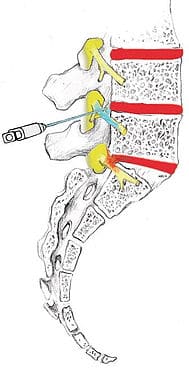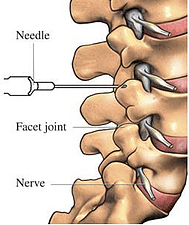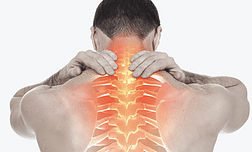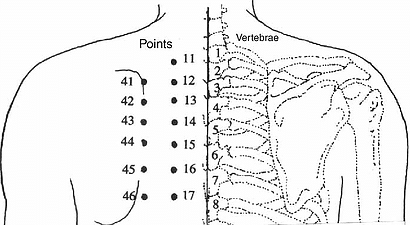Physical Therapy Exercises
 As part of conservative care for your neck or back, your physician may prescribe a physical therapy program. The idea behind this is to help rehabilitate and restore muscle strength in your neck or back, which are crucial in helping avoid future injuries. The musculature surrounding your spine becomes weakened after injuries and as we age, placing you at increased risk of further injury. A physical therapist can help instruct you on what types of exercises to do, the proper way to do them, and help you understand how far you should push yourself.
As part of conservative care for your neck or back, your physician may prescribe a physical therapy program. The idea behind this is to help rehabilitate and restore muscle strength in your neck or back, which are crucial in helping avoid future injuries. The musculature surrounding your spine becomes weakened after injuries and as we age, placing you at increased risk of further injury. A physical therapist can help instruct you on what types of exercises to do, the proper way to do them, and help you understand how far you should push yourself.
A referral to physical therapy often begins with an initial evaluation. Your physical therapy may perform tests and measurements to see where you are starting, and perform a history to determine what your goals are. Following this evaluation and with the input of your physician, a physical therapy program is then tailored to meet your needs. This may include exercises, hands-on mobilization, massage and/or modalities such as ultrasound, ice, heat, electrical stimulation (TENS) etc…
Epidural Steroid Injections
 When anti-inflammatory medications and physical therapy fail to provide relief, or when the initial pain is very severe, your physician may prescribe an epidural injection for your neck or back. These injections can be very effective at calming down inflamed nerve roots, such as occur in the case of herniated discs. Depending on the type and location of your condition, steroids can be injected under x-ray guidance to alleviate the discomfort. There are different types of epidural steroids injections depending on where the steroid is put but the end goal is the same, to get the steroid to the site of nerve irritation.
When anti-inflammatory medications and physical therapy fail to provide relief, or when the initial pain is very severe, your physician may prescribe an epidural injection for your neck or back. These injections can be very effective at calming down inflamed nerve roots, such as occur in the case of herniated discs. Depending on the type and location of your condition, steroids can be injected under x-ray guidance to alleviate the discomfort. There are different types of epidural steroids injections depending on where the steroid is put but the end goal is the same, to get the steroid to the site of nerve irritation.
The injection itself consists of a local anesthetic, which is a numbing medicine, and cortisone (the steroid which calms down inflammation). The procedure is done under x-ray guidance and takes about 10-15 minutes to complete. Depending on the type of injection and your pain tolerance, epidural injections can be done with local anesthetic alone (no sedation is given, the area is numb but you are completely awake) or with a mild sedative (you are still awake and breathing on your own but just sedated). These injections can be both diagnostic (meaning they confirm the origin of your pain) and therapeutic (meaning they can resolve the pain by calming down inflammation).
Facet Injections
 Facet injections are a type of steroid injection placed into the facet joints in your neck or back. Click on this link for a refresher on where exactly the facet joints are found. The injection is done in a similar fashion to the epidural injection, with the same medicine and under x-ray guidance. You have the choice of doing the procedure under light sedation or just have the local anesthetic (where the area is numb but you are awake).
Facet injections are a type of steroid injection placed into the facet joints in your neck or back. Click on this link for a refresher on where exactly the facet joints are found. The injection is done in a similar fashion to the epidural injection, with the same medicine and under x-ray guidance. You have the choice of doing the procedure under light sedation or just have the local anesthetic (where the area is numb but you are awake).
Facet injections can be very helpful for diagnostic purposes and for treatment. If your physician feels as though your back pain is from a facet issue, the injection will be able tell you whether or not that particular facet joint is the source of your pain. If you get good relief from the facet injection but it wears off, you may be a candidate for a procedure called a radiofrequency ablation or rhizotomy.
Chiropractic Treatments
 Chiropractors are health care professionals dedicated to the non-surgical treatment of disorders of the musculoskeletal and nervous systems. Chiropractors are trained to examine you and find areas of your body which are out of alignment, and perform adjustments to bring those areas back into alignment. The theory behind adjustments is that by realigning your joints, bones and muscles you can relieve the pressure on the nerves in that area and allow them to function better.
Chiropractors are health care professionals dedicated to the non-surgical treatment of disorders of the musculoskeletal and nervous systems. Chiropractors are trained to examine you and find areas of your body which are out of alignment, and perform adjustments to bring those areas back into alignment. The theory behind adjustments is that by realigning your joints, bones and muscles you can relieve the pressure on the nerves in that area and allow them to function better.
Chiropractors are also trained in mobilization techniques to aid in the movement and stretching of joints and muscles, with the goal of increasing range of motion and decreasing pain. In addition to these services, chiropractors can also help you come up with an exercise program for back and neck strengthening, provide heat and ice therapy, massage to improve circulation to your tissues, and dietary advice on supplements. Chiropractic treatments can be a useful tool for neck and back pain or to help you rehabilitate after surgery, so be sure and ask your physician if they think it can be helpful for your particular condition.
Acupuncture Treatments
Acupuncture is a type of treatment method which began in China more than 2500 years ago. It has become very popular as a treatment for many illnesses, including neck and back pain. Acupuncturists state that the body’s energy flows through twelve highways called meridians. This energy has both a yin (dark force) and yang (light force) which can fall into imbalance. Acupuncture treatment involves inserting thin needles into your skin along those energy highways (see the figure below) in an attempt to balance out the yin and yang energy. Proponents of acupuncture state that by stimulating these points, you can correct your body’s balance, improve the flow of energy, and eliminate symptoms.
Acupuncture has been studied by the National Institutes of Health, and while nobody knows for sure exactly how it works, there have been a few scientific theories. One theory is that it works by triggering the release of natural endorphins or opioids which alter your perception of pain. Another is that acupuncture triggers the release of certain neurotransmitters which dampen nerve impulses carrying pain. When done by an experience, licensed acupuncturist, the procedure is generally safe and many people have obtained significant relief. If you are considering acupuncture treatments, ask your doctor about whether it would be of benefit for your specific condition.


